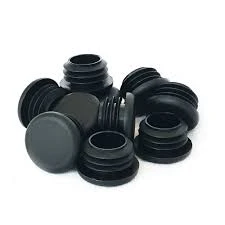Mobile:+86-311-808-126-83
Email:info@ydcastings.com
Italian
Comparison of Impellers and Propellers in Fluid Dynamics Applications
The Distinction Between Impellers and Propellers A Comprehensive Overview
In the fields of fluid dynamics and propulsion, the terms 'impeller' and 'propeller' are often used interchangeably. However, these two components serve distinct functions and are designed for different applications. Both play critical roles in moving fluids, but their mechanisms, applications, and performance are different. Understanding these differences is essential for engineers and designers in various industries, including marine, aerospace, and manufacturing.
Definitions and Functions
An impeller is a rotating component commonly found in centrifugal pumps and compressors. It consists of blades or vanes that convert rotational energy into kinetic energy, causing fluid to move radially outward from the center. Impellers are primarily used in applications where the goal is to increase the pressure and flow rate of a fluid. They are typically enclosed in a casing that helps guide the fluid and improve efficiency.
A propeller, on the other hand, is a device with blades that spins around a central axis to generate thrust in a fluid, typically water or air. Propellers are often used in marine vessels, aircraft, and some industrial applications. The design of a propeller allows it to pull or push the vehicle through a fluid by converting rotational energy into linear thrust. The blades are usually shaped to create a pressure difference between the front and back surfaces, facilitating the motion through the surrounding medium.
Design Considerations
The design of impellers and propellers reflects their specific functions. Impellers are designed to maximize fluid movement and pressure within a confined space, focusing on the efficiency of energy transfer. The blades are shaped in a way that allows for a smooth flow of the fluid, minimizing turbulence and optimizing performance. Impellers can come in various configurations, including mixed flow, radial flow, and axial flow, each suited for specific applications.
Propellers, however, prioritize thrust generation over confinement. Their blades are typically pitched at an angle to optimize the forward motion of a vessel or aircraft. The material, shape, and size of propeller blades significantly impact their performance, especially with respect to speed and maneuverability. Additionally, propellers are subject to unique aerodynamic and hydrodynamic aspects that influence how they perform in different environments.
impeller and propeller

Applications
Impellers are commonly used in applications involving the movement of liquids, such as water treatment plants, chemical processing, and heating systems. They are essential components of pumps found in various industries, including oil and gas, pharmaceuticals, and food processing. Their ability to handle viscous fluids and slurries makes them invaluable in many industrial processes.
Propellers, in contrast, are vital for vehicles that navigate through fluids. In marine applications, propellers are mounted on the shafts of boats and ships to facilitate movement through water. In aviation, propellers are used in small aircraft, where they provide the necessary thrust for flight. The design and efficiency of propellers can greatly influence fuel consumption, speed, and overall performance of aircraft and vessels.
Performance and Efficiency
The performance of impellers and propellers is often evaluated using various metrics, including efficiency, power output, and operational stability. In impellers, efficiency is typically determined by the ratio of hydraulic energy delivered to the mechanical energy input. Variations in blade design, including surface smoothness and angular position, can significantly impact this efficiency.
Propeller performance is often analyzed through parameters like thrust, drag, and flow velocity. The thrust produced by a propeller is influenced by factors such as blade pitch, rotational speed, and the fluid in which it operates. Optimizing these factors is crucial for enhancing performance, reducing fuel consumption, and achieving greater speed.
Conclusion
In conclusion, while impellers and propellers both serve the purpose of moving fluids, they are fundamentally different in design, function, and application. Impellers focus on increasing fluid pressure and flow within constrained systems, while propellers generate thrust to propel vehicles through water or air. Understanding these differences is crucial for engineers and designers as they optimize these components for specific applications, enhancing performance and efficiency in various technologies. As industries continue to evolve, the development of more advanced impellers and propellers will play a key role in improving fluid dynamics across countless applications.











